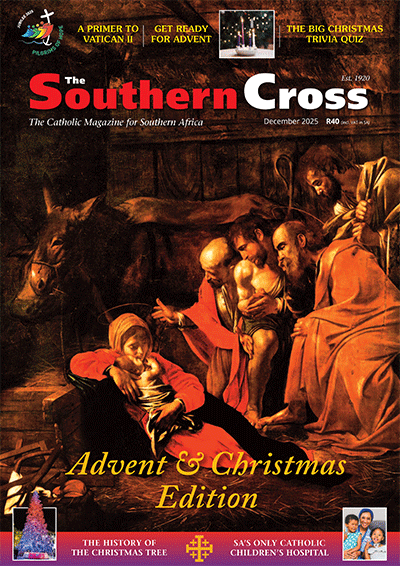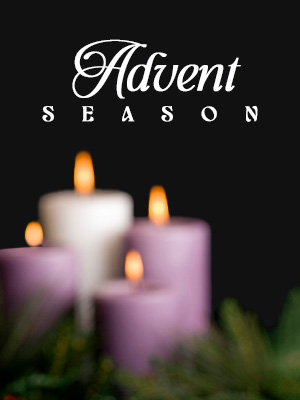What You Need to Know About Pentecost

We look at the origin, meaning, and practice of the Church’s second-most important liturgical feast.
This weekend, the Church celebrates Pentecost, the second-greatest feast of the liturgical year (after Easter). It concludes the Easter season and celebrates the beginning of the Church.
Here’s what you need to know about the feast day:
The timing and origins
Pentecost always occurs 50 days after the death and resurrection of Jesus, and ten days after his ascension into heaven.
Because Easter is a moveable feast without a fixed date, and Pentecost depends on the timing of Easter, Pentecost can fall anywhere between May 10 and June 13.
A few of us experienced the latest possible date for Pentecost, June 13, which last was in 1943. And some of us will see the next one, in 2038.
Why 50 days?
The name of the day itself is derived from the Greek word pentecoste, meaning “fiftieth”.
The reason Pentecost falls 50 days after Easter comes from a parallel Jewish holiday, Shavu’ot (Feast of Weeks), which falls 50 days after Passover. Shavu’ot is sometimes called the Festival of Weeks, referring to the seven weeks since Passover.
Originally a harvest feast, Shavu’ot now commemorates the sealing of the Old Covenant on Mount Sinai, when the Lord revealed the Torah to Moses on the mountain. Every year, the Jewish people renew their acceptance of the gift of the Torah on this feast.
Where is it in the Bible?
The main event of the Christian feast of Pentecost—the strong driving wind and tongues of fire—takes place in Acts 2:13, though the events immediately following Peter’s homily (the baptism of thousands) continue through to verse 41.
What happened?
In the Christian tradition, Pentecost is the celebration of the person of the Holy Spirit coming upon the Apostles, Mary, and the first followers of Jesus—about 120 of them—who were gathered together in the Upper Room (where Christ had instituted the Eucharist a few weeks earlier) on Mount Zion while they were in Jerusalem celebrating Shavu’ot (Acts 1:13-15).
A “strong, driving” wind filled the room where they were gathered, and tongues of fire came to rest on their heads, allowing them to speak in different languages so that they could understand each other.
It was such a strange phenomenon that some people thought the Christians were just drunk—but Peter pointed out that it was only 9 o’clock in the morning, and that the phenomenon was caused by the Holy Spirit.
The Holy Spirit also gave the apostles the other gifts and fruits necessary to fulfil the great commission—to go out and preach the Gospel to all nations.
It fulfils the New Testament promise by Christ (in Luke 24:46-49) that the Apostles would be “clothed with power” before they would be sent out to spread the Gospel.
The risen Christ thus kept his promise: “While at table with [the apostles], he had told them not to leave Jerusalem, but to wait there for what the Father had promised. ‘It is,’ he had said, ‘what you have heard me speak about: John baptised with water but, not many days from now, you are going to be baptised with the Holy Spirit’” (Acts 1:4-5)
Why is it important?
The first Pentecost shifted God’s redemptive purpose from the “descendants of Abraham, Isaac and Jacob” to all peoples. There would still be a lot of debate about how this was going to work—Paul eventually persuaded Peter to include the uncircumcised Gentiles.
Birth of the Church!
It was right after Pentecost that Peter, inspired by the Holy Spirit, preached his first homily to Jews and other non-believers, in which he opened the scriptures of the Old Testament, showing how the prophet Joel foresaw events and the coming of the Holy Spirit at Pentecost.
He also tells the people that the Jesus they crucified is the Lord and was raised from the dead, which “cuts them to the heart”.
When the people ask what they should do, Peter exhorts them to repent of their sins and to be baptised. According to the account in Acts, about 3000 people were baptised following Peter’s sermon. These people were among the very first Christians!
For this reason, Pentecost is considered the birthday of the Church. Peter, the first pope, preaches for the first time and converts thousands of new believers. The Apostles and believers, for the first time, were united by a common language, and a common zeal and purpose to go and preach the Gospel.
The presence of Mary, who gave birth to the Redeemer, at the birth of the Church prompted Pope Francis to declare the Monday after Pentecost the feast of the Blessed Virgin Mary, Mother of the Church.
Pentecost vestments
Typically, Catholic priests wear red vestments on Pentecost, symbolic of the burning fire of God’s love and the tongues of fire that descended on the apostles.
However, in some parts of the world, Pentecost is also referred to as “Whit Sunday”, or White Sunday, referring to the white vestments that are typically worn in Britain and Ireland.
The white is symbolic of the dove of the Holy Spirit, and typical of the vestments that catechumens desiring baptism wear on that day.
Customs around the world
In many parts of central and northern Europe, Pentecost and the day after is a public holiday.
Before Vatican II, Pentecost Monday was a Holy Day of Obligation in the Catholic Church, and in some countries it is still a high feast in the Lutheran Church.
In Germany, the feast is called Pfingsten. It often coincides with short school holidays and marks the beginning of many outdoor and community activities.
In 2005 German business associations demanded that the public holiday be scrapped. Parties on the left and right of the centre joined the churches in opposing that move.
The same year the public holiday was scrapped in Sweden.
In France the public holiday was also scrapped in 2005, but it reinstated three years later following strong public pressure.
Pentecost Monday is also a public holiday in some African countries, such as the Republic of Congo, Ivory Coast, Senegal, Benin, Gabon, Togo, Réunion and the Central African Republic.
In some European countries, such as France, it is tradition to blow trumpets during Mass to recall the sound of the driving wind of the Holy Spirit.
In central and eastern Europe, especially in German-speaking countries, churches are often decorated with green branches during Pentecost.
An Italian Pentecost tradition is to scatter rose leaves from the ceiling of the churches to recall the miracle of the fiery tongues, and so in some places in Italy, Pentecost is sometimes called Pascha Rosatum (Easter roses).
In Asia, it is typical to have an extra service, called genuflexion, during which long poems and prayers are recited.
Must we fast?
The eve of Pentecost traditionally was a day of fasting for Catholics, but canon law no longer requires it. Still, many Catholics continue to fast on the vigil to Pentecost.
The novena connection
The timing of the Easter feasts is the origin of the concept of the novena—nine days of prayer—because in Acts 1, Mary and the Apostles prayed together “continuously” for nine days after the Ascension leading up to Pentecost.
Traditionally, the Church prays the novena to the Holy Spirit in the days before Pentecost.
Happy Birthday!
Because we are part of the Body of the Church, and Pentecost is the Church’s birthday, it is our birthday as well. And as we celebrate our individual birthday, we have reason to celebrate our communal birthday as the Church.
- Fathers James Rice and Paul Moore Ordained Priests for the Archdiocese of Cape Town - December 17, 2025
- 460 Eastern Cape Children Receive Essential Care and Meals in Week-Long Holiday Camp - December 16, 2025
- Fr Peter-John Pearson: Where SA and Vatican Stand Together - December 15, 2025





